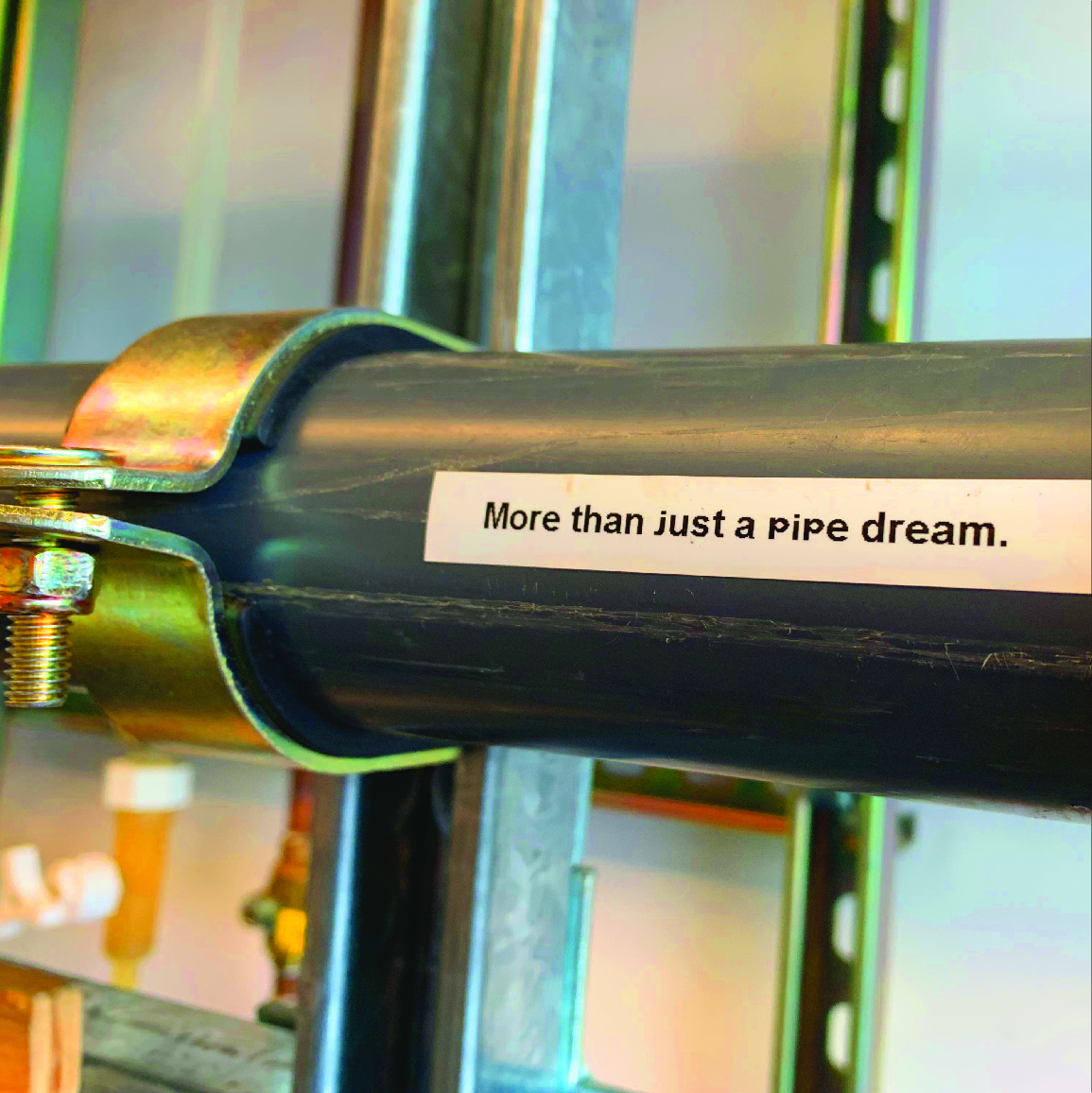This week, the R.W. Kern Center interns took a trip over to UMass to check out Hampshire alum Mimi Alkattan’s lab and research on intermittent water supplies (IWS). Behind this wonderful selfie are two pipe loops where Mimi has been evaluating water quality in both a “standard” and intermittent supply. Using the Amherst municipal water supply, she looks at the microbiology of each pipe system, and also measures turbidity (water cloudiness) and pH.
Mimi’s research is has strong parallels to the R.W. Kern Center’s rainwater-to-potable water supply. Though our system isn’t quite intermittent (because it’s never completely empty of water), it does face the same challenge of low and inconsistent flow. Because our building uses so little water, there is often water sitting in the pipes for several hours or even days at a time. Mimi’s work looks at how this inconsistent flow might affect the types and quantities of microorganisms found in the water.
She showed us different ways she evaluates water quality in her systems. Like the RWKC, she looks at HPC (Heterotrophic Plate Count), a measure of bacterial load. She also tests for ATP (Adenosine triphosphate), a bacterial energy source or “molecular unit of currency.” Both these tests provide an indirect look at how much is living in the water, but don’t indicate what types of microorganisms are present. Other tests, like E-coli analysis, offer more direct insights into water safety (don’t worry, neither of us have ever found E-coli in our systems!).
Mimi also studies the biofilms that form inside pipes. These are deposited layers of bacteria and other organisms that colonize the pipe surface and feed on nutrients in the water. Biofilms are found in most water supplies, including here at RWKC. Professor Jason Tor’s Research Methods in Microbiology class is currently looking at similar questions in the RWKC, analyzing the biofilm from our pipes to figure out what type of bacteria are making their homes in the building.
Thank you Mimi for showing us your research!


